French Recipes, Podcast Episodes and France Travel Tips!
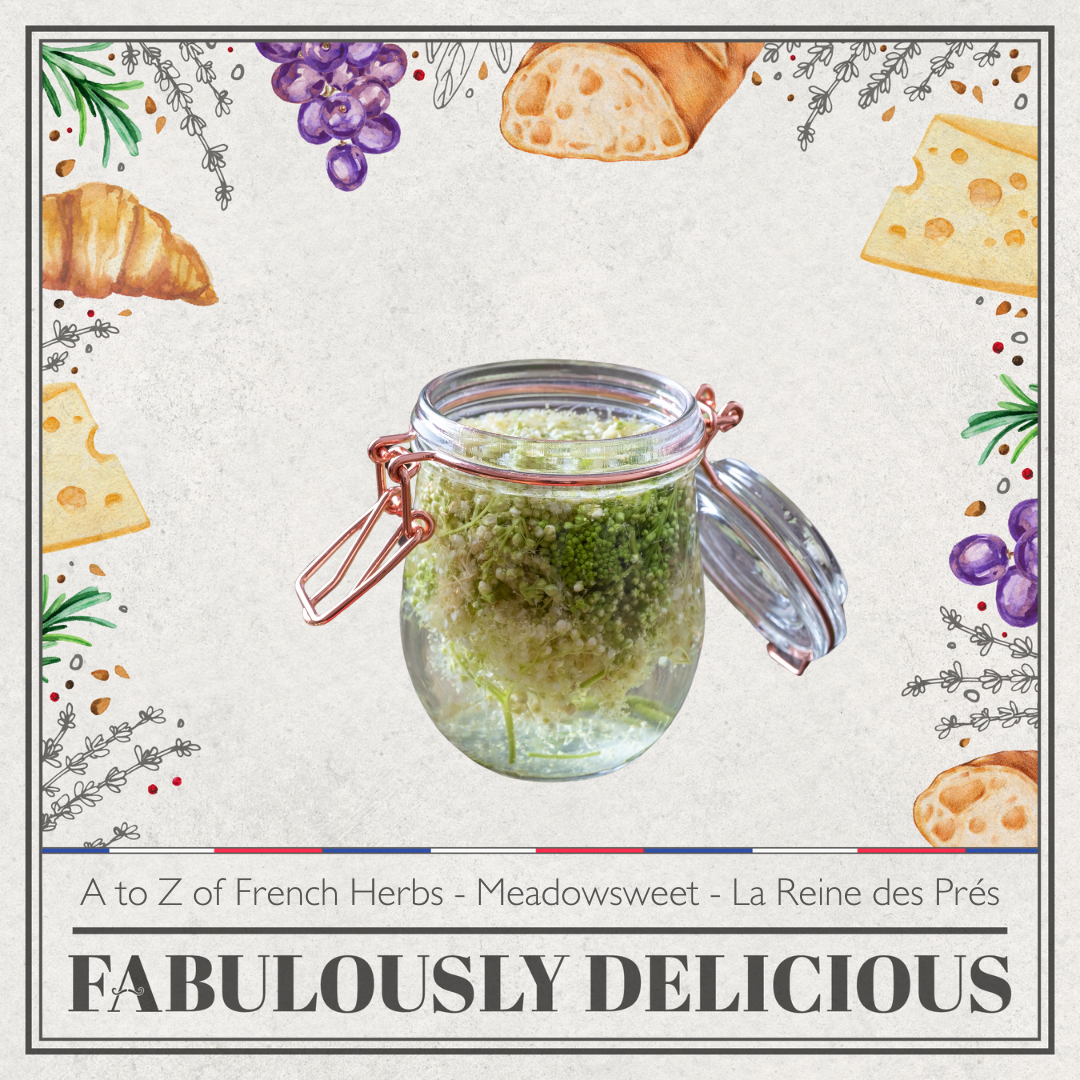
A to Z of French Herbs - Meadowsweet - La Reine des Prés
Meadowsweet, or La Reine-des-prés in French, holds a cherished place in the heart of French culinary tradition, weaving its fragrant presence through the annals of gastronomy. Originating in the 16th century, Meadowsweet was revered not only for its delicate white flowers but also for its ability to sweeten mead, earning it the esteemed title of "meadsweet." Today, this botanical gem continues to enchant chefs and home cooks alike, adding a subtle almond flavor to a myriad of French dishes, from savory stews to delectable desserts.
Beyond its culinary allure, Meadowsweet's influence extends into folklore, literature, and even modern pharmacology. In Welsh mythology, it played a role in the creation of women, symbolizing purity and beauty. Throughout history, Meadowsweet has been celebrated for its medicinal properties, cited as a remedy for ailments ranging from dysentery to pain relief, culminating in its pivotal role in the creation of aspirin by scientists at Bayer in 1899.

A to Z of French Herbs - Thyme - Thym
The Timeless Elegance of Thyme: From Ancient Rituals to Culinary Delight
Thyme, known as "Thymus vulgaris" in botanical terms, has a rich history deeply rooted in ancient civilizations. The etymology of its name traces back to the Greek word "Thymos," meaning to fumigate, reflecting its use as incense in Ancient Greek temples.
The herb comes in various varieties, each with distinct flavors and aromas, such as lemon thyme, orange thyme, and wild thyme. Commonly used in culinary creations, Thyme belongs to the mint family and shares familial ties with Oregano.
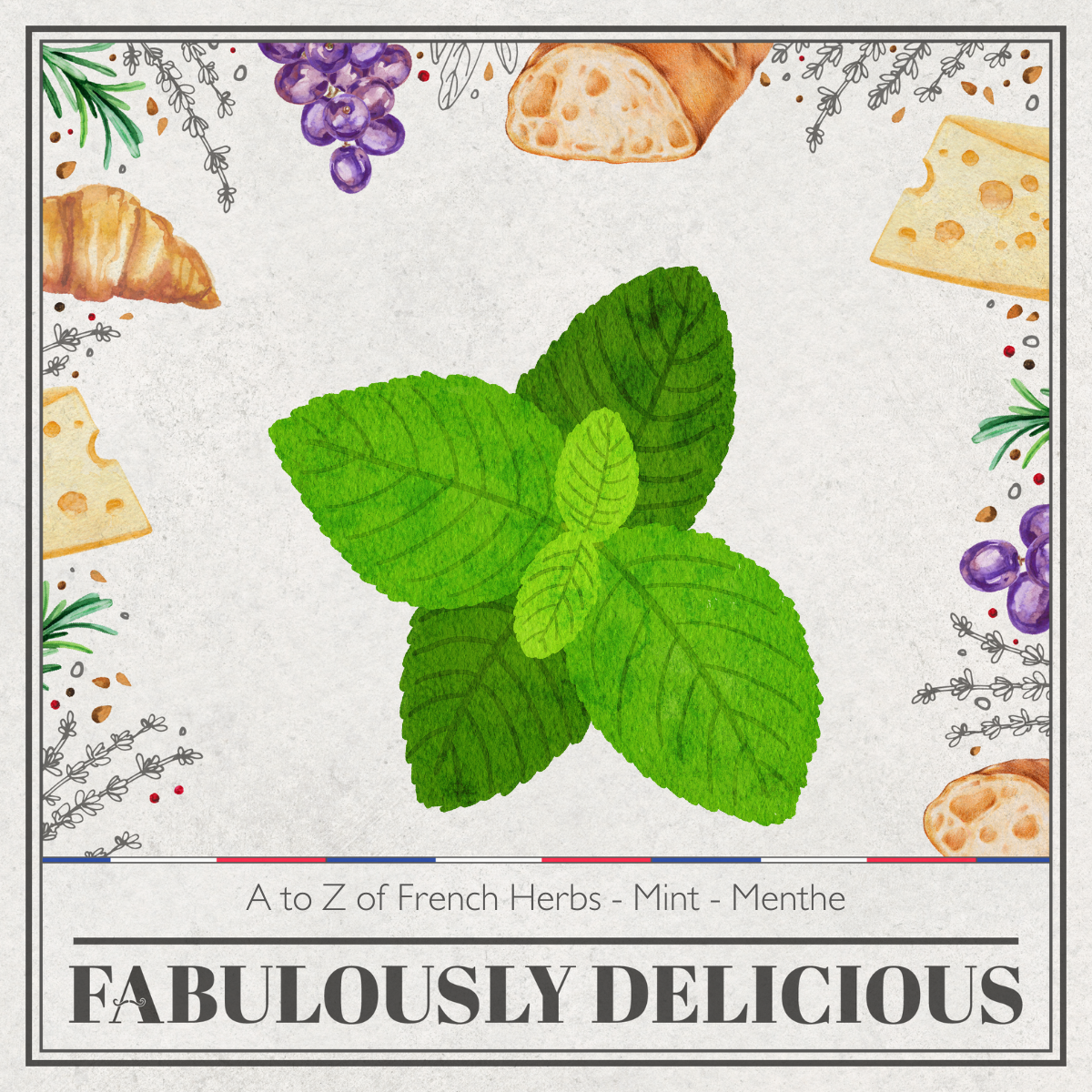
A to Z of French Herbs - Mint - Menthe
Mint is pronounced in French, as Menthe. Mint is also known as Mentha which comes from the Greek Mintha (Mi-Ta)
It is part of so many herbs we’ve come across in this series, the Lamiaceae or mint family. Which includes herbs like basil, rosemary, sage, oregano and catnip.
Some plants that have fragrant leaves and are called mint are not in the mint family like Vietnamese mint and also Mexican mint the latter actually being a part of the sunflower family.
Mint is found in Europe, Africa, Asia, Australia, Oceania, and North and South America.
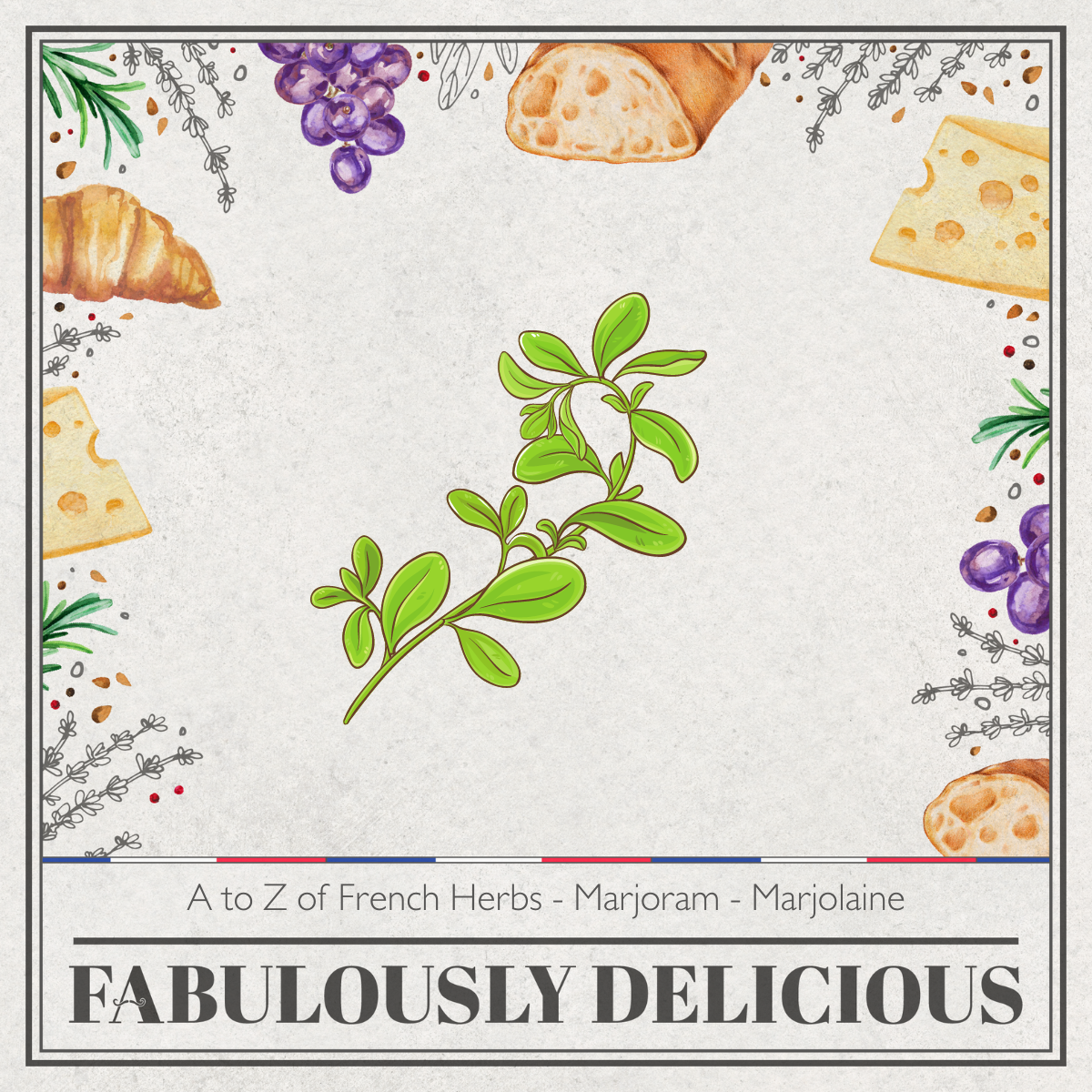
A to Z of French Herbs - Marjoram - Marjolaine
Marjoram in French is pronounced Marjolaine. Marjoram’s botanical name is Origanum Majorana. The name marjoram comes from the old French Marjorane which came from the Latin Majorana.
Often called garden oregano, marjolaine des Jardins, marjolaine officinale or marjolaine a coquilles.
It’s a cold-sensitive perennial herb that has pine and citrus flavors that make it very popular with chefs. It spreads prolifically so is usually grown in pots to prevent it from taking over the garden and is part of the Lamiaceae family.
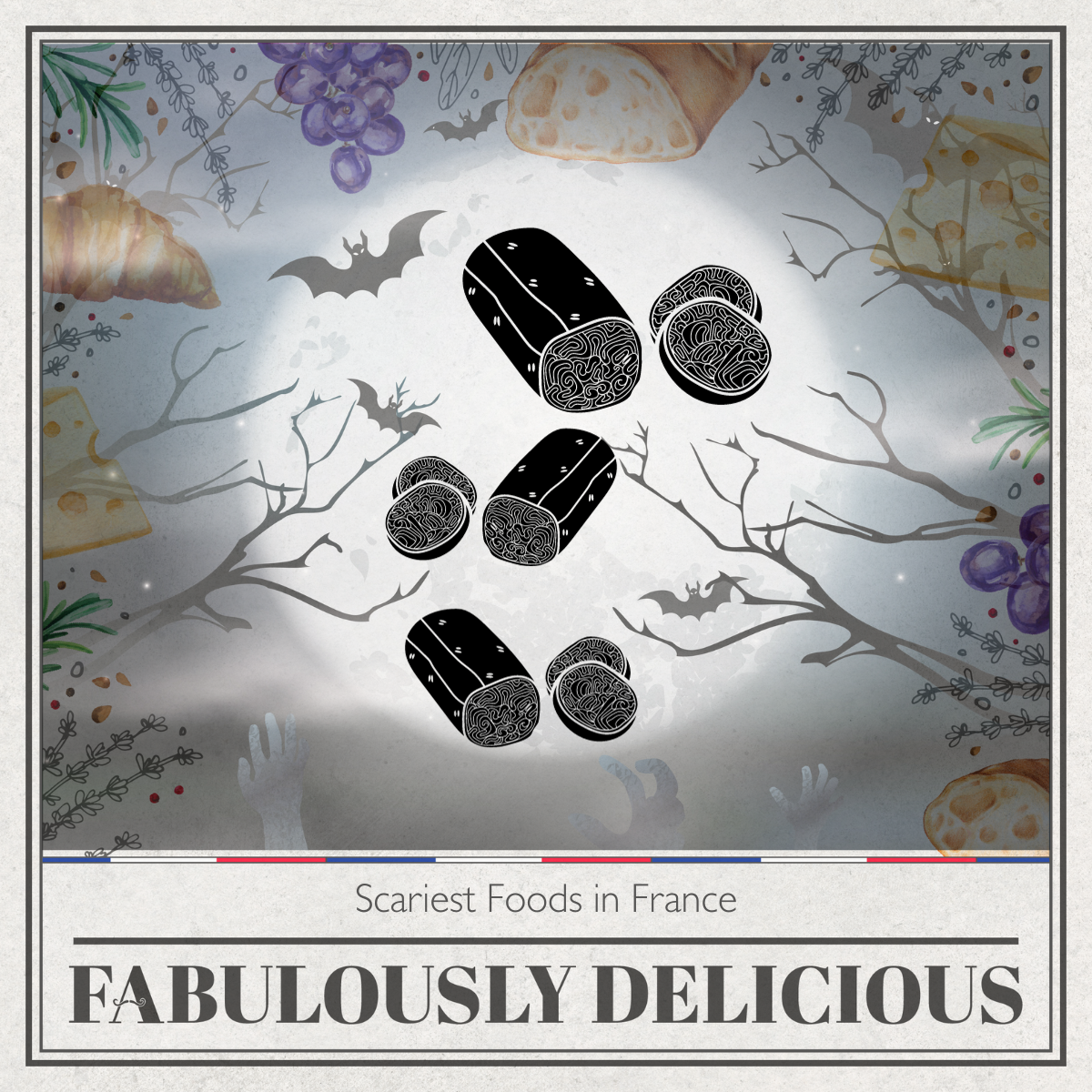
Scariest Foods in France
It’s the scariest day of the year. I will be closing the window shutters so those little trick or treaters don’t think Im home. So I thought we could look into briefly some of the scariest French foods that we might run from the table screaming and saying we are never going back to that restaurant again, others love them and they are practically salivating when they see them on the menu.
Let’s start with the Andouillette. The name comes for the French word Andouille which comes from the Latin Inductile meaning the thing we introduce in the gut. Andouillette didn’t appear in a French dictionary until the 15th century.

International Champagne Day - Revisit Champagne with Cynthia Coutu and Kyla Kirkpatrick
Fabulously Delicious, The French Food Podcast, is a delectable journey into the world of French cuisine. In this episode we are celebrating International Champagne Day which is the 4th Friday of October every year.
I've done two episodes on Champagne so far on Fabulously Delicious, one with the Champagne Dame Kyla Kirkpatrick and the other with the fabulous Cynthia Coutu.
So I thought to celebrate all things champagne I'd let these two experts on the topic tell us about champagne the region and drink and women in champagne.
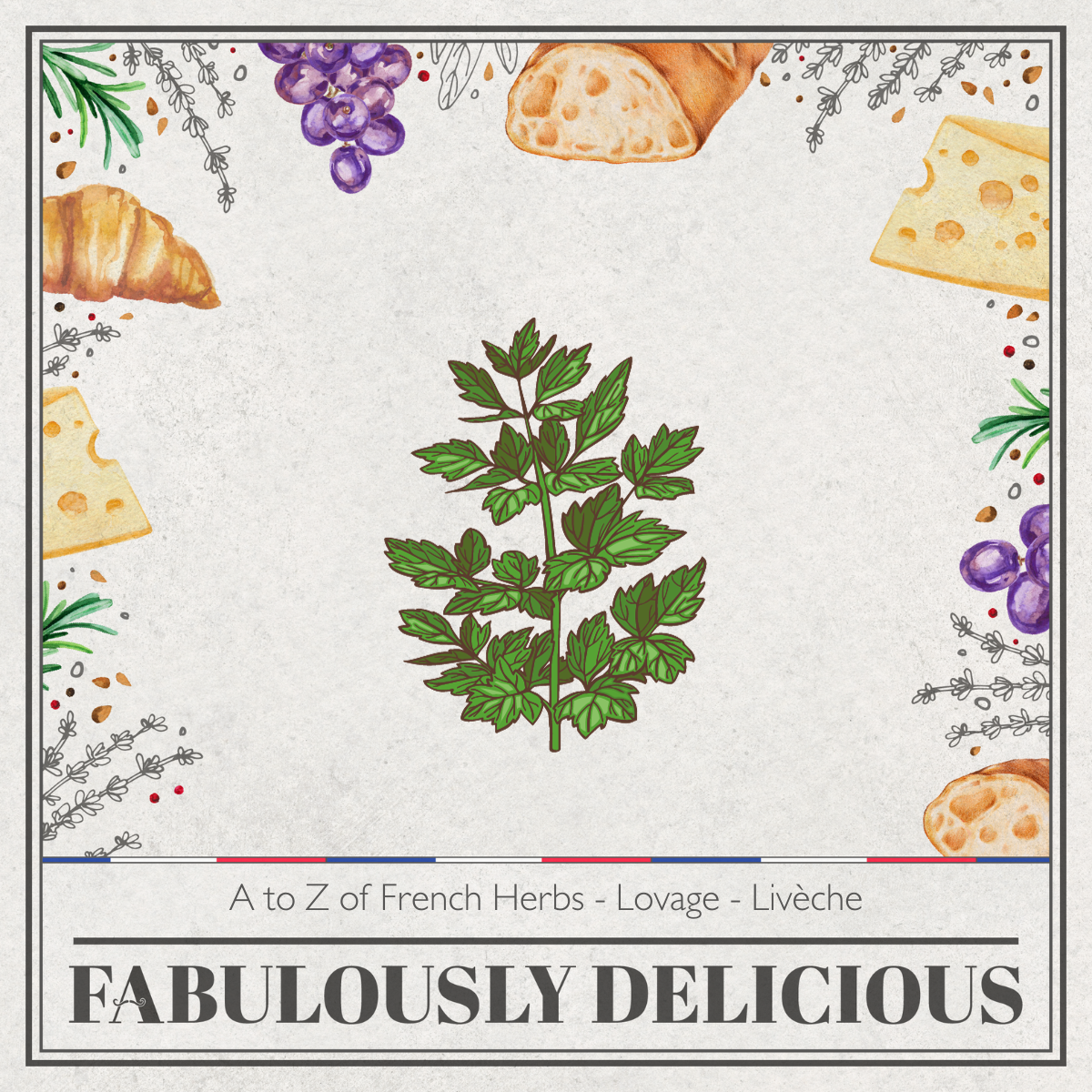
A to Z of French Herbs - Lovage - Livèche
Lovage or Livèche as it is pronounced in French is a perennial plant that is part of the apiaceae or parsley family which includes parsley, dill and carrot.
Lovage has been cultivated in Europe for centuries with its leaves as a herb, roots as a vegetable and seeds as a spice.
The flavour of Lovage is similar to that of celery and parsley but more intense and some would say spicier.

International Chef Day - Revisit Chat with Bruno Feldeisen
Fabulously Delicious, The French Food Podcast, is a delectable journey into the world of French cuisine. In this episode, I'm revisiting my chat with Bruno Feldeisen which I did in season 2.
The reason for this revisit is to celebrate International Chef Day which is today. Bruno is a French chef who now lives in Canada and many would know him as the judge on the Great Canadian Baking Show.
Bruno has a great love of the kitchen and food and sometimes often controversial views on many things. I hope you enjoy this revisit.
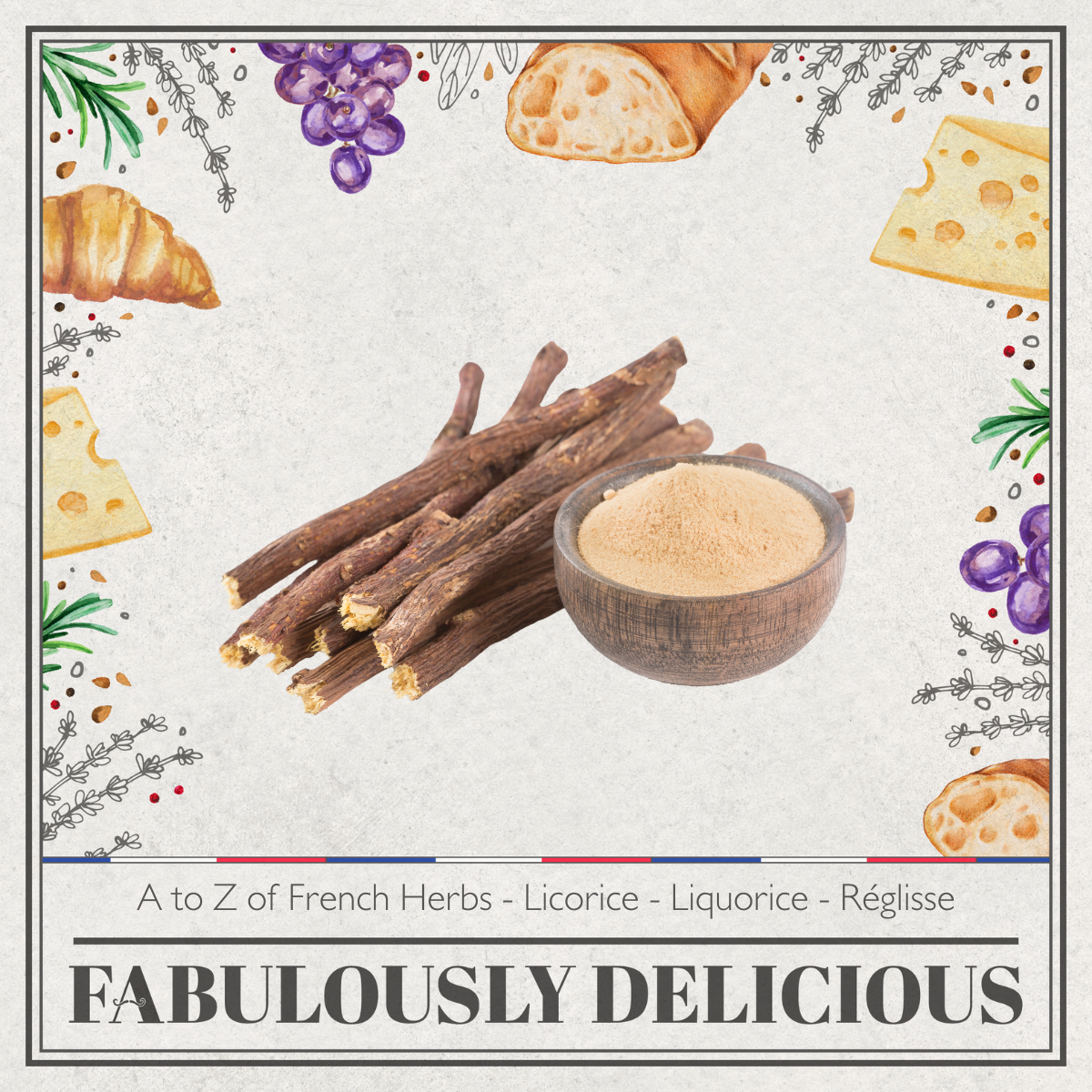
A to Z of French Herbs - Licorice - Liquorice - Réglisse
Liqourice as it’s known in UK English but in the US its Licorice but in France, it is known as Réglisse.
The word Licquorice both the English and US versions is derived via the Anglo-French Lycorys which comes from the Latin word Liquiritia which itself came from the Greek word for sweet root.
Licorice is the common name of Glycyrrhiza glavra, This botanical name also comes from the Greek word glabra.
It’s a flowering plant from the Fabaceae family or bean family. It’s the root of the plant that is harvested for its sweet and aromatic flavor. It’s a herbaceous perennial plant that grows to about 1 meter or 40 inches in height and its leaves are about 7-15cm in length or around 3-6 inches long. Licorice has long purple to pale blue flowers and the plant has a long pod that forms a fruit that contains seeds. But it is the root that is most sought after.

Gary Girod From The French History Podcast
Today is the last in the series I’ve been doing with Gary Girod from the French history podcast. We had an episode from Gary about Thomas Jefferson and an episode from me about James Hemmings as well as some bonus episodes of recipes from James Hemings.
Well on today’s episode of Fabulously Delicious, Gary and I had a chance to sit down and chat about our mutual love of France and interest in food and history. It’s a good chance to get to know each other and for your audience to get to know us a bit more as well.

James Hemings Mac and Cheese Recipe
Like many I’m sure watching the acclaimed food series on Netflix High on the Hog was not only entertaining, and delicious but highly educational. Food writer Stephe Satterfield traces back the origins of African-American cuisine and I was fascinated to learn connections to French food in this series for a dish that isn’t I would have thought had any connection to France, Mac and Cheese.
James Hemings, Thomas Jeffersons, slave, brother-in-law, personal valet, and then eventually chef created the version we know of today after having in France a dish of pasta and cheese that he called at the time macaroni pie. This is the dish that would then evolve into what we around the world would call Macaroni and cheese.
Here is James Hemings' version of Mac and Cheese. Well as far as we know.
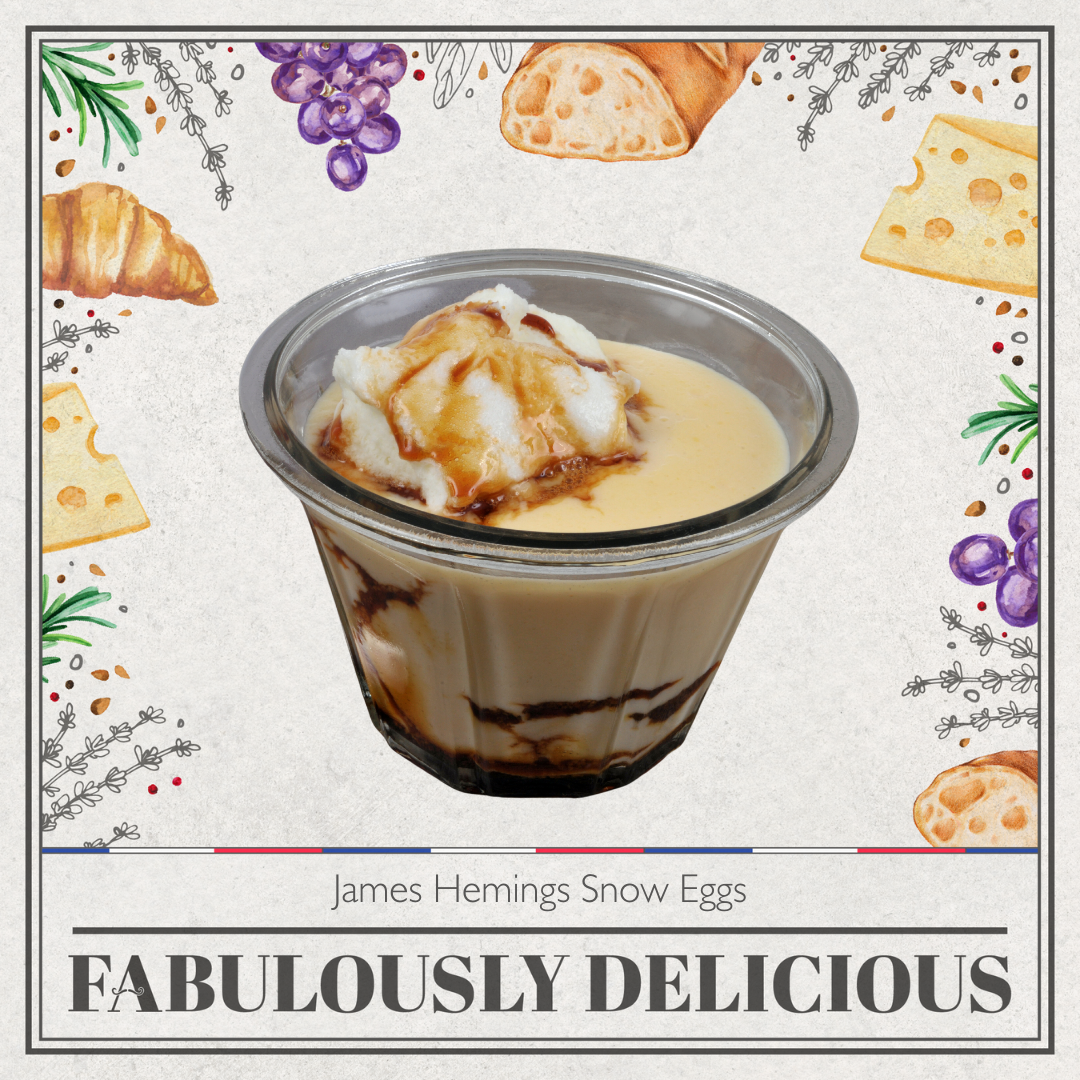
James Hemings Snow Eggs Recipe
Snow Eggs or Isle Flotante or Oeufs a la neige as they’re known in France are wonderful poached meringues that sit on a custard or creme anglaise. The name snow was attributed to the whipping of the egg whites until they looked fluffy and stiff like snow.
In 1747 Hannah Glasse recorded in her cookbook The Art of Cooking Made Plain and Easy a recipe for floating islands, Glasse was an English cook but her recipe bears no resemblance to the recipe we know for today's version.
There is a note in a letter from Benjamin Franklin in 1771 about having a floating island dessert. But as far as we can tell James Hemmings's version that we know today was his own creation and is now enjoyed around the US and France, well even around the world.
Here is his original recipe for Snow Eggs

The Story Of James Hemings - The French History Podcast Collaboration
James Hemings was born into slavery in 1765 at the forest a plantation in Virginia owned by his father. James’ mother was Betty Hemings who was the mixed-race daughter of an enslaved African mother and an English sea captain.
John Wayles was James’s father. He took Betty as a forced concubine after he was widowed three times. His abuse of James’s mother Betty lasted 12 years and she had six children including James with this man.
At just the young age of eight years old, he was purchased by Thomas Jefferson at his residence of Monticello.

Update on all things Fabulously Delicious
I wanted to give you a little update on everything here in France, Montmorillon, life, tours, cooking experiences, new projects and the podcast I’ve been getting lots of emails and DMs recently so I thought we’d have a quick chat about everything.
Fabulously Delicious is now a part of the Evergreen Podcast network. I went to the London Podcast festival back in May and met the guys at Evergreen there and gave them some tips for Paris restaurants as one of the team was heading there next. Since then I’ve now been fortunate to join a network that has some amazing podcasts in it like The French History Podcast and Le Siecle. The partnership with Evergreen will mean that they will in the future be able to help with the growth and management of Fabulously Delicious and that will mean this French food podcast we all know and love will hopefully get a larger loving audience. Evergreen has already helped me with new artwork for the show and episodes which I love.

Thomas Jefferson's Paris and France - The French History Podcast Collaboration
Today we are doing something a little bit different. Over the next three weeks, I will be bringing you a collaboration with one of my favorite podcasters, Gary Girod from The French History podcast. As you know if you are an existing listener, oh by the way if you a new listener, bonjour and enchantee, and thanks so much for listening, I hope you love the podcast and subscribe and follow if you do.
So as I was saying recently I joined the Evergreen Podcast network and one of the many fabulous podcasts on the network is The French History Podcast. Gary I recently met and I was in awe, to be honest as his podcast is one that I love listening to and await the next episode of.
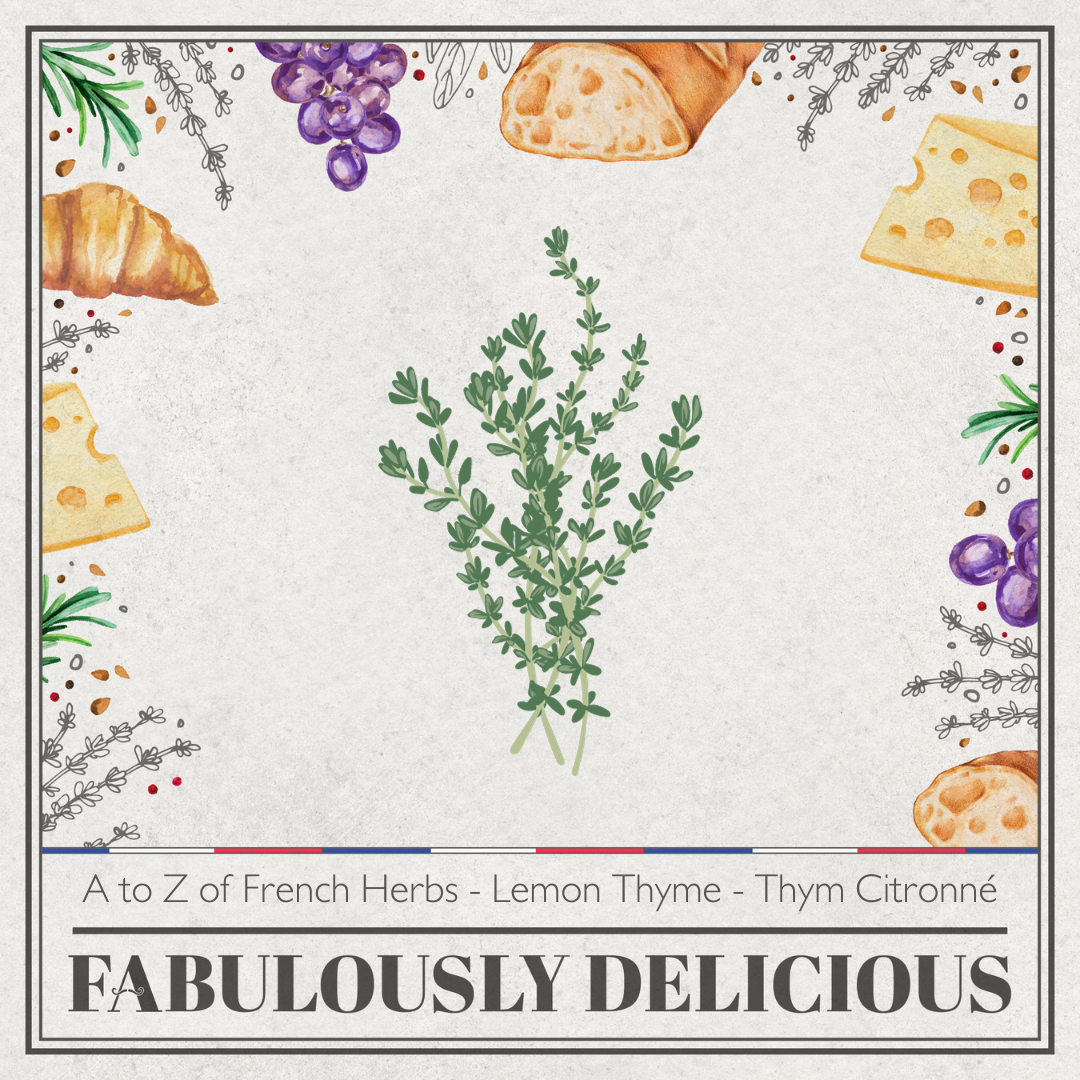
A to Z of French Herbs - Lemon Thyme - Thym Citronné
Lemon thyme, also known as "thym citronne” in French cuisine, is a prized aromatic herb used for its unique and refreshing flavor. The narrow, green leaves of this plant emit a subtle scent of lemon and thyme, making it an essential ingredient in many French recipes.
Lemon Thyme or citrus thyme as it is also known, is pronounced thym citronné in French.
Its botanical name is Thymus Citriodorus and is part of the Lamiaceae family of plants. As the name suggests its leaves have a strong lemon scent and flavor to it.
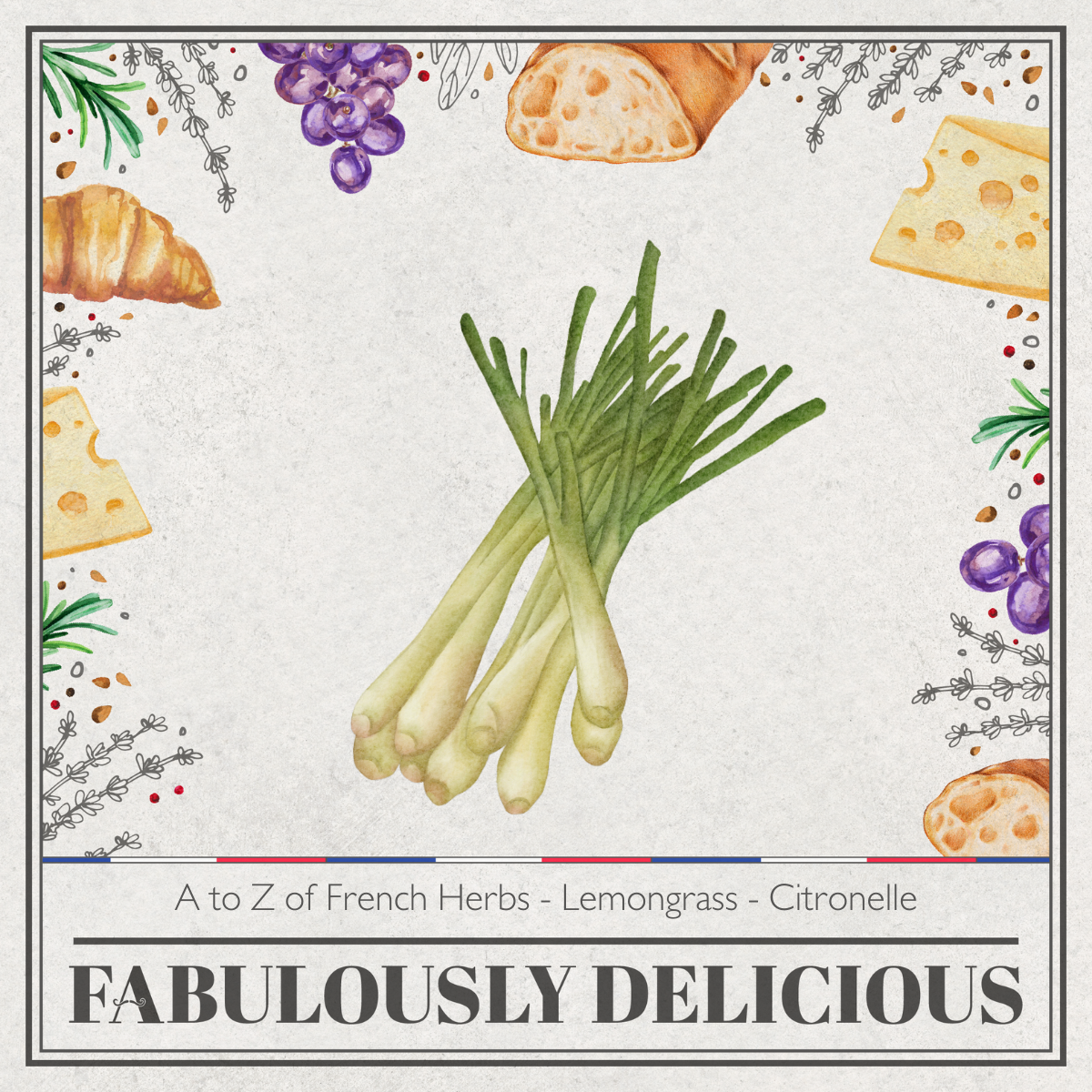
A to Z of French Herbs - Lemongrass - Citronnelle
In French cuisine, lemongrass can add an exotic and fragrant touch to many dishes. This aromatic herb, originating from Southeast Asia, is used sparingly to impart a subtle yet distinctive flavor creating a delightful fusion of French and Asian flavors.
Lemongrass is known botanically as Cymbopogon. Other names for lemongrass include barbed wire grass, silky heads, cochin grass, Malabar grass, oily heads, citronella grass, sera, and fever grass.
Its botanical name Cymbopogon comes from the Greek words Kymbe meaning boat and pogon meaning beard. Lemongrass is part of the Poaceae or grass family.
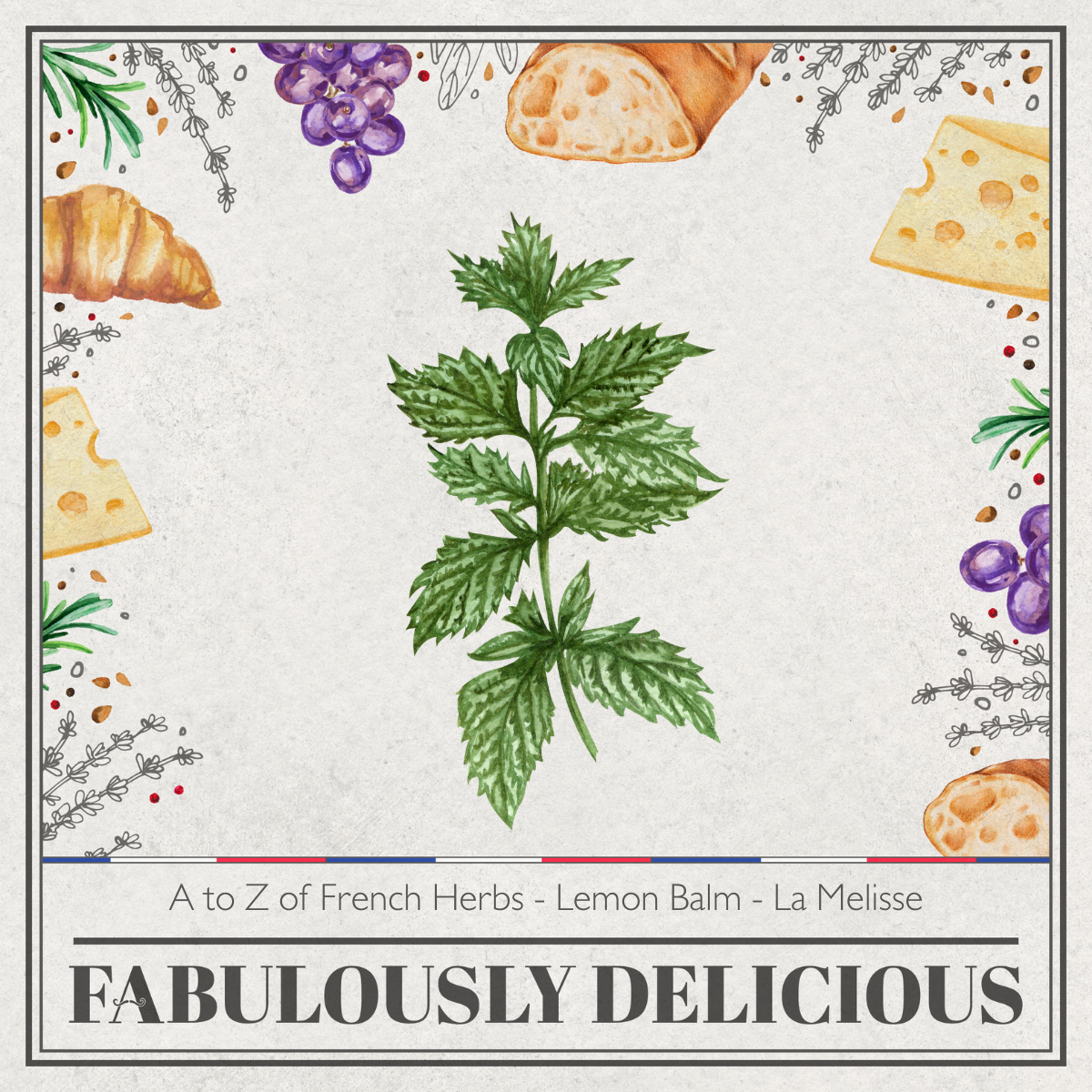
A to Z of French Herbs - Lemon Balm - La Mélisse
Have you heard of Chartreuse, Benedictine, Carmelite or Eau des Carmes as it’s also called? These lesser-known liqueur all have a prominent ingredient. It's often enjoyed as a digestive or apéritif and is made using a recipe that has historical ties to the Carmelite monks. All three of these liquors have something in common. Do you know what that is?
Lemon Balm in French is pronounced Mélisse and is a perennial herbaceous plant part of the Lamiaceae or mint family. Its botanical name is Melissa Oficinalis. The officinalis comes from Latin and means of the shop. This comes from the use of the herb by apothecaries who sold herbal remedies.
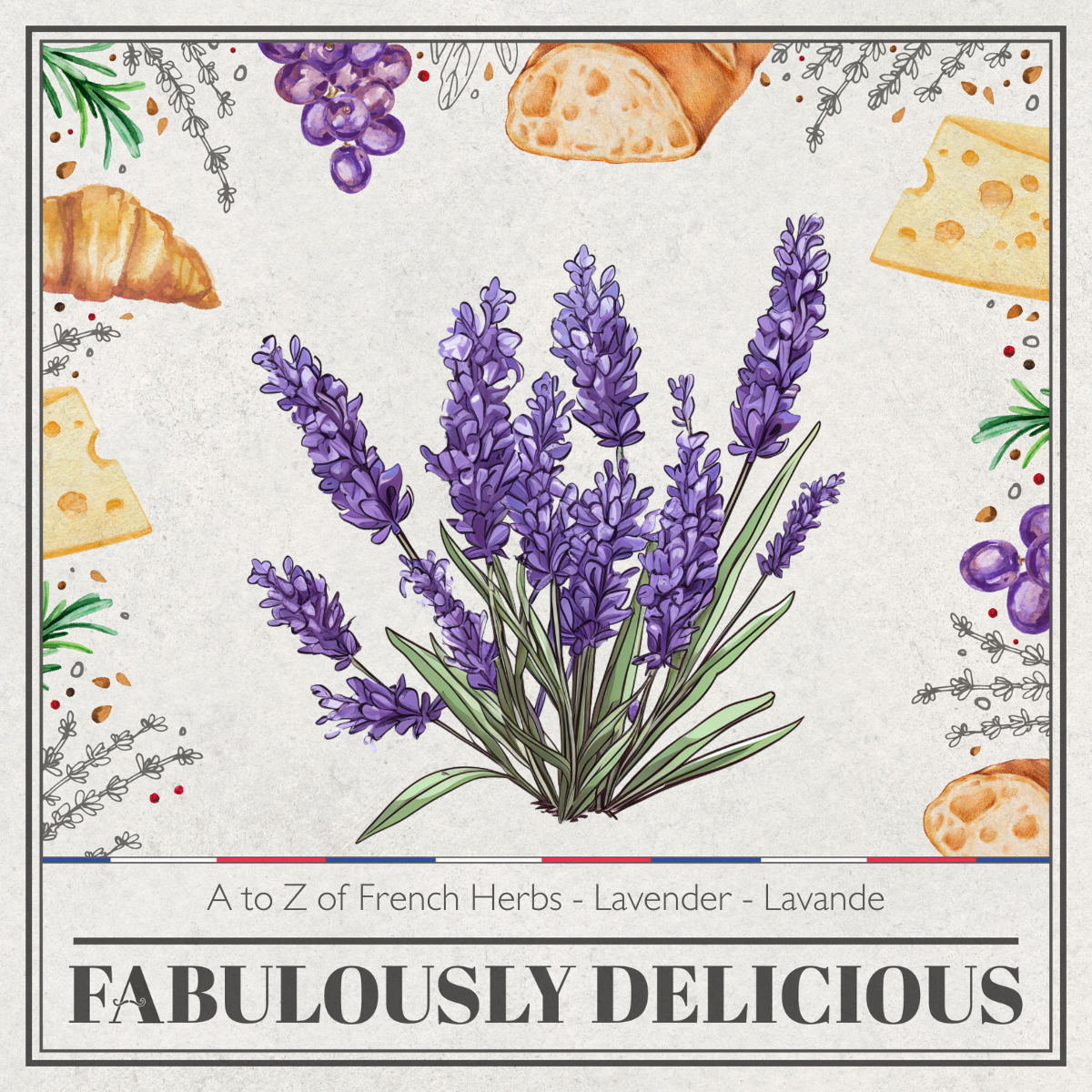
A to Z of French Herbs - Lavender - Lavande
Endless lavender fields stretching as far as the eye can see, quaint French villages, and the intoxicating scent of lavender wafting through the air. Ah, Provence! But did you know that this iconic region doesn't just captivate your senses with its stunning landscapes? Lavender also takes centre stage in the Provencal kitchen.
Lavender in French is pronounced Lavande and is part of the Lamiaceae family of plants which is also known as the mint family. There are actually 47 known species in the Lamiaceae family.
It’s native to Africa, Europe, and Asia as well as the Canary Islands. Although native in many regions in Australia especially the state of Victoria since 1920 some species of lavender are considered a noxious weed as it’s so invasive. Thus in Spain, this is the same situation with it being considered a weed in some parts of the country.
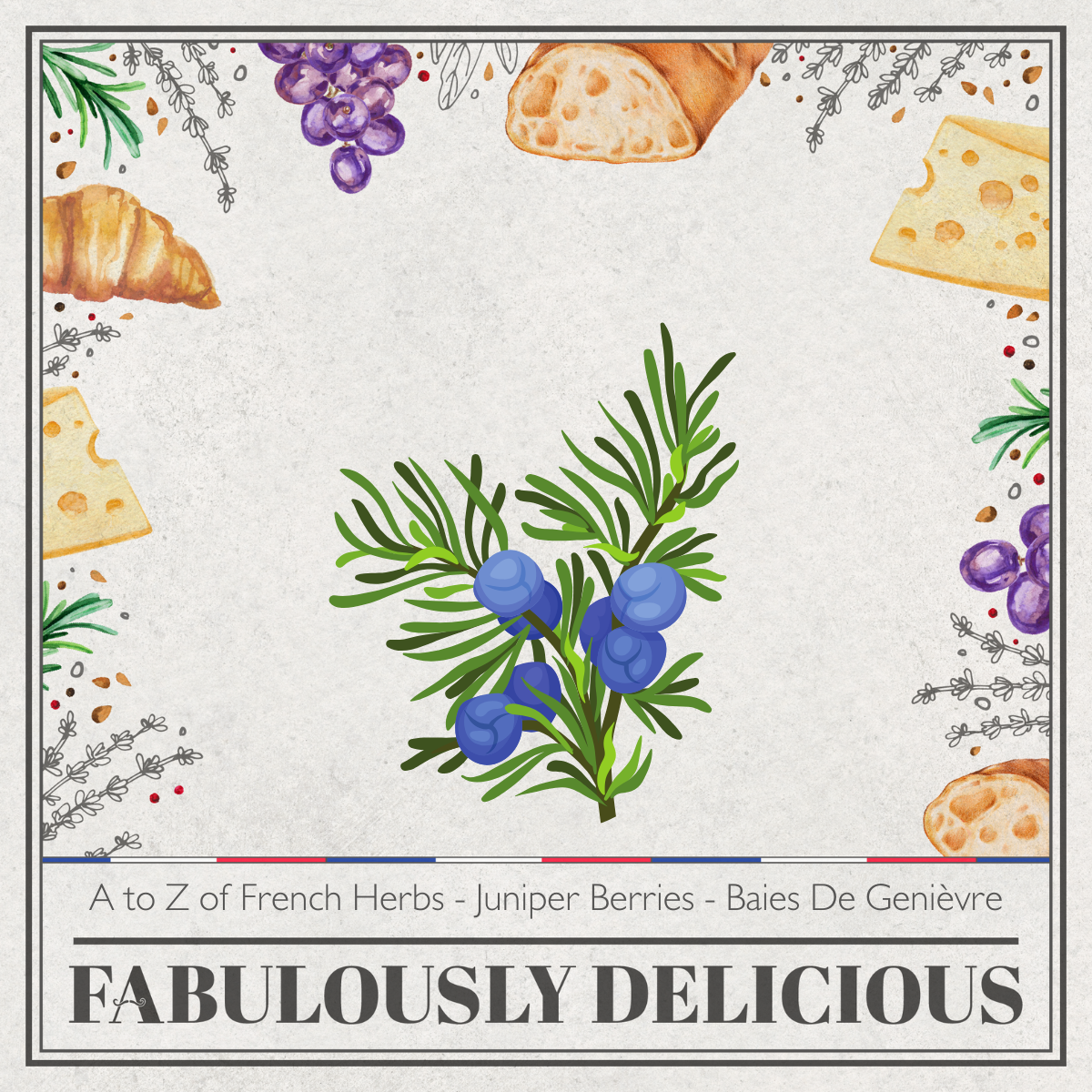
A to Z of French Herbs - Juniper Berries - Baies De Genièvre
In a country known for its wine, cheese, and baguettes, these little berries often play a stealthy role in some of the most iconic French dishes. From tantalizing sauces that make you go 'oh là là' to their secret flirtations with game meats, juniper berries have been spicing up French recipes for centuries.
Juniper Berries in French are pronounced baies de genièvre iIn French.
One of the things to note about Juniper Berries is that they aren’t actually a berry. They are the the female seed cone from the plant and by many would be considered a spice, not a herb but I’m adding them to this series anyway.

